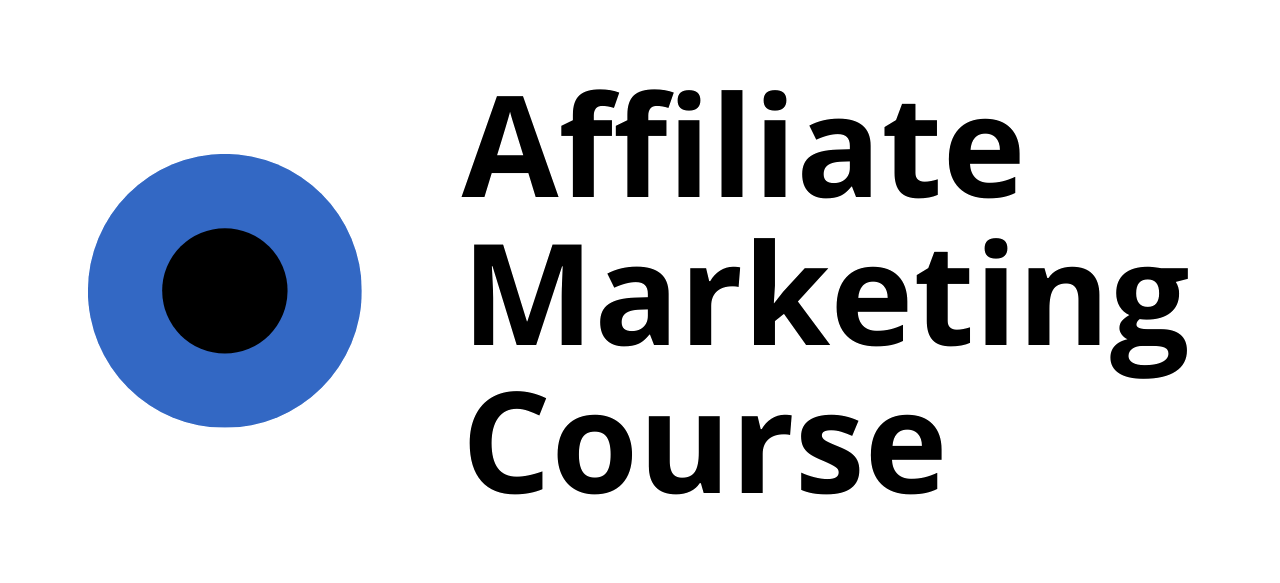In the dynamic world of marketing, staying ahead requires innovative strategies and tools. One powerful approach that has consistently delivered results is the use of sales funnels, particularly in the realm of affiliate marketing. For those new to the concept, a sales funnel serves as a structured pathway guiding potential customers from initial awareness to final conversion. In the context of affiliate marketing, this becomes even more potent, allowing affiliates to leverage proven tactics to drive traffic, build trust, and ultimately close deals. However, creating an effective sales funnel can feel overwhelming, especially when considering the array of tools and platforms available. That’s where a free done-for-you sales funnel comes into play, offering a streamlined solution for even the most inexperienced marketers. This article dives into the ins and outs of affiliate marketing sales funnels, exploring everything from the essential stages to the best practices for maximizing results. Whether you’re looking to understand the basics or refine your existing strategy, this guide has something for everyone. So, let’s embark on a journey to unlock the full potential of affiliate marketing sales funnels and discover how a well-crafted funnel can elevate your efforts to new heights.

How to Create a Sales Funnel for Affiliate Marketing for Free
To create a sales funnel for affiliate marketing without any cost, follow these organized steps:
- Choose Your Niche : Select a niche you’re passionate about. Examples include tech gadgets, health products, or eco-friendly items, as these often have strong affiliate programs.
- Create a Free Website :
- Use free platforms like WordPress.com or Blogger to set up a simple blog or landing page. These platforms don’t require hosting fees.
- Drive Traffic :
- Content Marketing : Write articles or create videos about your niche. Share these on social media platforms like Instagram, Pinterest, and TikTok.
- Engage in Communities : Join forums such as Reddit or Quora and participate in discussions related to your niche. Provide valuable insights to build trust.
- Leverage YouTube : Create product reviews or tutorials and include affiliate links in video descriptions.
- Build an Email List :
- Offer a free resource like an eBook or guide as a lead magnet to encourage email sign-ups. Send regular newsletters with affiliate offers and updates.
- Join Affiliate Networks :
- Apply to affiliate programs like Amazon Associates, ShareASale, and ClickBank. These networks connect you with various merchants.
- Create Affiliate Links :
- Once approved, place affiliate links on your website or within your emails. Ensure links are relevant and contextually appropriate.
- Monetize Effectively :
- Look for affiliate programs offering higher commissions. Consider creating your own digital products, such as eBooks or online courses, to boost conversions.
- Track Performance :
- Use tools like Google Analytics to monitor traffic sources and conversion rates. Experiment with A/B testing to optimize landing pages and email campaigns.
- Stay Updated :
- Keep abreast of the latest trends and strategies in affiliate marketing. Engage with blogs, forums, and communities focused on the field.
- Build Relationships :
- Maintain good communication with affiliate programs. Consistent performance may lead to better opportunities and terms.
By following these steps, you can efficiently create a free sales funnel that drives traffic and converts visitors into buyers through affiliate marketing.
The Right Order of the Stages of an Affiliate Marketing Sales Funnel
The stages of an affiliate marketing sales funnel typically follow the AIDA model: Awareness, Interest, Desire, and Action. Here’s a breakdown of each stage:
- Awareness : This is the initial stage where potential customers become aware of your product or service. Affiliates may use various methods such as social media ads, content marketing, or influencer partnerships to reach their audience.
- Interest : Once aware, individuals may engage with content that provides value, such as blog posts, tutorials, or comparison guides, which helps in building their interest.
- Desire : After showing interest, customers begin to desire the product. This stage often involves targeted emails, webinars, or personalized recommendations that highlight the product’s benefits.
- Action : Finally, customers take action by clicking on an affiliate link, visiting the merchant’s site, and completing the purchase. Affiliates receive commissions upon confirmation of the sale.
This structured approach ensures that each stage smoothly transitions the customer towards making a purchasing decision, optimizing the chances of conversion.

What Are the 5 Stages of the Marketing Funnel?
The marketing funnel consists of five distinct stages, each designed to guide potential customers from awareness to purchase. Here’s a breakdown of each stage:
- Awareness :
- Definition : The first stage is about making potential customers aware of your product or service.
- Tactics : This stage uses advertising, content marketing, and social media to educate prospects about the problems they face and introduce your solutions. Examples include billboards, YouTube videos, and blog posts.
- Attraction :
- Definition : Once aware, prospects may visit your website or sign up for newsletters.
- Tactics : Lead generation is key here. Offer free resources like eBooks or webinars to attract visitors. Content marketing continues to play a role in keeping prospects engaged.
- Interest :
- Definition : Prospects show interest by interacting with your brand.
- Tactics : Personalized emails, discounts, and targeted ads can be used to convince leads that your product meets their specific needs.
- Decision :
- Definition : Leads are now ready to make a purchase decision.
- Tactics : Provide clear information on pricing, features, and benefits. Create landing pages or special offers to encourage purchases, ensuring the checkout process is simple and secure.
- Conversion :
- Definition : The final stage where the sale is made.
- Tactics : Facilitate the transaction and follow up to ensure satisfaction. This step can also include upselling or cross-selling opportunities to build long-term relationships with customers.
By understanding these stages, businesses can tailor their strategies to effectively move leads through each phase, ultimately boosting conversion rates and fostering customer loyalty.

Can You Make Money Selling Sales Funnels?
Yes, you can absolutely make money using sales funnels. They offer a powerful way to generate leads, convert visitors into customers, and scale your business. Here’s how you can leverage sales funnels effectively:
1. Affiliate Marketing
Affiliate marketing is one of the most popular ways to earn income through sales funnels. By promoting products or services as an affiliate, you can earn commissions whenever someone clicks your affiliate link and makes a purchase. Platforms like AffiliateMarketingCourse.biz provide comprehensive guides to help you get started.
2. Digital Products
Create and sell your own digital products such as eBooks, online courses, templates, or software tools. Funnel these products through your sales funnel to attract customers and generate revenue. For example, you could create a funnel that directs visitors to your product page on AffiliateMarketingCourse.biz .
3. Subscription Models
Offer a subscription-based service through your sales funnel. Whether it’s a monthly membership site, a newsletter, or access to exclusive content, recurring revenue can be a stable income source. Learn how to set this up by checking out our guide on AffiliateMarketingCourse.biz .
4. Consulting Services
Position yourself as an expert in your niche and offer consulting services through your sales funnel. Create a funnel that captures leads and connects them with your consultation offers. Discover effective strategies for this approach on AffiliateMarketingCourse.biz .
5. Webinars and Workshops
Host live or recorded webinars and promote them via your sales funnel. These events can be used to showcase your expertise, generate leads, and sell products or services. Find tips and tools for hosting successful webinars at AffiliateMarketingCourse.biz .
6. Email Marketing
Email marketing is a highly effective tool for nurturing leads and converting them into paying customers. Use your sales funnel to capture email addresses and build an engaged audience for your email campaigns. Learn more about optimizing your email marketing efforts on AffiliateMarketingCourse.biz .
7. Paid Advertising
Promote your sales funnel using paid advertising channels like Google Ads, social media ads, and video ads. Drive targeted traffic to your funnel and convert it into leads or sales. Get strategies for running successful paid campaigns on AffiliateMarketingCourse.biz .
By leveraging these methods, you can turn your sales funnel into a profitable asset that generates income while growing your business. Remember, the key is to continuously optimize and test your funnel to see what works best for your audience.
Do You Need a Sales Funnel for Affiliate Marketing?
Yes, a sales funnel can be beneficial for affiliate marketing, though it may not always be a strict requirement depending on your goals and strategies. Here’s a breakdown of the key considerations:
1. Lead Generation and Nurturing
A sales funnel helps in guiding potential customers through various stages, from initial contact to eventual purchase. In affiliate marketing, this can involve capturing leads who show interest in your promoted products but may not be ready to buy immediately. By nurturing these leads, you can re-engage them with targeted offers, increasing the likelihood of future conversions and commissions.
2. Branding and Consistency
A well-structured sales funnel creates a cohesive experience for users, enhancing your brand’s credibility and trustworthiness. This consistency is particularly important in affiliate marketing, where you act as an extension of the merchant’s brand, helping to establish a professional image.
3. Analytics and Optimization
Sales funnels provide valuable insights into each stage of the customer journey, allowing you to identify bottlenecks and areas for improvement. This data-driven approach can optimize your affiliate marketing strategy, leading to better conversion rates and more predictable revenue streams.
4. Diversification of Traffic Sources
By implementing a sales funnel, you can test and refine different marketing tactics, such as email campaigns versus social media efforts. This experimentation can reveal which channels yield the best results, enabling a more focused and effective marketing strategy.
5. Integration with Tools and Automation
There are tools available that can automate parts of the sales funnel process, making it more manageable and scalable. These tools can handle lead tracking, automated email sequences, and nurturing contacts, all while seamlessly integrating with your affiliate program.
Considerations for Starters
For newcomers, a basic sales funnel structure can serve as a solid foundation, simplifying the process of attracting and converting traffic. As your affiliate marketing efforts grow, you can expand and refine your funnel to accommodate more complex strategies.
Conclusion
While not an absolute necessity, incorporating elements of a sales funnel can enhance your affiliate marketing efforts by improving lead generation, boosting conversion rates, and fostering long-term customer relationships. It offers a scalable and efficient approach for building a sustainable affiliate marketing program.

Is the Sales Funnel Outdated?
The sales funnel, once a linear process, has evolved into a dynamic, multi-channel approach that aligns with modern buying behaviors. Here’s how it has transformed:
1. Multi-Channel Engagement
Traditional sales funnels focused on a single pathway. Today, buyers interact with multiple touchpoints across various channels before making a purchase. This shift requires a more nuanced approach that caters to diverse customer journeys.
2. Buyer’s Journey Integration
The modern sales funnel mirrors the buyer’s journey, encompassing awareness, consideration, and decision stages. Each phase is tailored to address specific customer needs, ensuring a seamless transition from exploration to purchase.
3. Inbound Marketing Influence
With the rise of inbound marketing, the focus has shifted from chasing leads to attracting them. This transformation includes content marketing and education to nurture prospects, integrating these strategies into the sales funnel.
4. Personalized Experiences
Big data allows for hyper-personalization, tailoring messages and offers to individual preferences. This level of customization wasn’t feasible on the same scale before, enhancing engagement and conversion rates.
5. Technology Integration
Email marketing, CRMs, and retargeting tools have become integral parts of the sales funnel. These technologies enable tracking, communication, and follow-up, crucial for managing customer relationships effectively.
Conclusion
The sales funnel has transcended its traditional form, embracing multi-channel engagement, personalized experiences, and data-driven strategies. While its core purpose—to guide customers toward purchase—remains unchanged, its methods have adapted to the complexities of the digital age. Thus, the sales funnel is not only relevant but thrives in contemporary marketing landscapes.




0 Comments